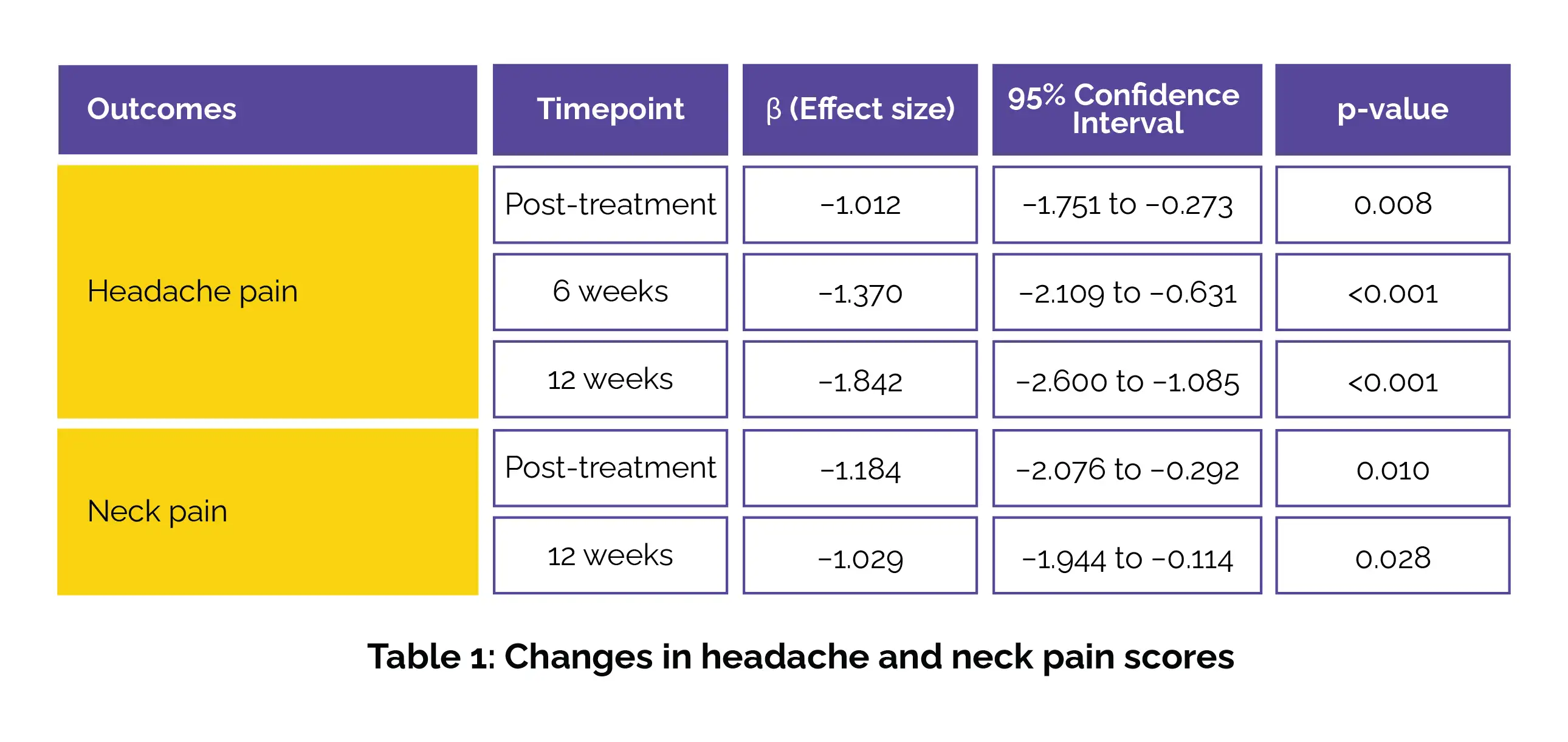Categories
Change Password!
Reset Password!


Transcranial direct current stimulation + exercise eases cervicogenic headache-related pain with no major impact on mood or quality of life.
A randomized pilot trial suggests that transcranial direct current stimulation (tDCS) paired with exercise therapy may be a safe, feasible, and potentially effective treatment for cervicogenic headaches.
Cervicogenic headaches stem from ailments of the cervical spine, such as injury or degeneration, and often result in chronic pain, diminished quality of life, and limited functional capacity. While standard interventions like radiofrequency ablation, manual therapy, medications, and exercise therapy offer relief for some, many patients continue to experience symptoms. tDCS, a non-invasive neuromodulation technique, has shown promise in altering neuronal activity and mitigating chronic pain conditions—but until now, it has not been studied as a treatment for cervicogenic headaches.
Hence, researchers conducted a double-blind, sham-controlled feasibility trial to determine both the safety and the practicality of tDCS + exercise therapy in 32 patients diagnosed with cervicogenic headache as per the International Classification of Headache Disorders (ICHD-3). Volunteers (aged 18 to 65 years) were randomized to get either active tDCS or a sham (placebo-like) version, in addition to daily exercise therapy over 6 weeks. Each tDCS session targeted the primary motor cortex on the side with the worst pain, lasted 20 minutes, and delivered 2 mA of current.
Feasibility was assessed based on recruitment, retention, adherence, and completion of treatment within the intended timeframe. Safety was tracked via reports of adverse events and participant feedback. Out of 97 individuals contacted, 32 were successfully recruited, with 16 randomized into each group. A total of 14 subjects in each group completed the full treatment protocol, although not all completed it within the 6-week timeframe. The average adherence to exercise therapy was high—at 87% of prescribed days for both groups.
Exploratory analysis showed noteworthy improvements over time in average headache pain and neck pain among those who received active stimulation compared to those in the sham group. These benefits were observed from pre- to post-treatment and continued through follow-up at 6 and 12 weeks, indicating a sustained therapeutic effect of the combined intervention (Table 1).

However, no vital differences were noted between the groups in terms of mood or quality of life scores. Importantly, no serious adverse events were reported. One minor adverse event occurred in the active group, and itching was reported more frequently after tDCS in the active group (64%) compared to the sham group (43%).
The researchers emphasize the requisition for larger, more powerful trials to further explore and confirm these promising early results. If validated in larger studies, this non-invasive brain stimulation technique could become a valuable addition to the treatment toolkit for those who do not respond adequately to conventional therapies for cervicogenic headaches.
Headache: The Journal of Head and Face Pain
The safety and feasibility of transcranial direct current stimulation and exercise therapy for the treatment of cervicogenic headaches: A randomized pilot trial
Kaiden Jobin et al.
Comments (0)